With March being Women’s History Month, the Atmospheric Radiation Measurement (ARM) user facility wants to acknowledge the many women who have been important contributors to ARM’s success.
The list below is by no means comprehensive. Rather, this page features current ARM and Atmospheric System Research (ASR) program managers, infrastructure staff, User Executive Committee (UEC) members, constituent group chairs, principal investigators, and other scientists participating in field campaigns.
U.S. Department of Energy (DOE) ARM and ASR Leadership
Sally McFarlane
ARM Program Manager, 2014 to present
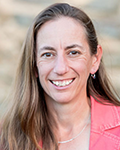
Sally McFarlane co-managed ASR for a year and a half before moving to ARM in 2014. McFarlane also co-manages a topic in Atmospheric Measurement Technology for DOE’s Small Business Innovation Research program. As an active researcher, beginning in 1999, McFarlane racked up 50-plus peer-reviewed publications―many of them on the atmospheric radiative effect of clouds and aerosols. Her work included studies of dust storms in sub-Saharan Africa, ice and mixed-phase cloud properties (using NASA satellite data), and the utility of uncrewed aerial systems in arctic Alaska.
Read more about McFarlane here.
Shaima Nasiri
ASR Program Manager, 2014 to present
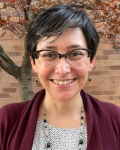
Atmospheric scientist Shaima Nasiri is one of two program managers for ASR, which resides in DOE’s Biological and Environmental Research program. Nasiri also belongs to the Interagency Council for Advancing Meteorological Services Committee on Research and Innovation, and she is a member of the U.S. Group on Earth Observations (USGEO), a federal interagency partnership on civilian Earth observation activity. She is a co-chair of USGEO’s Satellite Needs Working Group, which conducts a biennial collection of federal agency satellite Earth observation needs for NASA to consider as part of its satellite systems engineering and budgeting processes. Nasiri joined ASR from Texas A&M University, where she taught classes in introductory meteorology, cloud physics, radiative transfer, and remote sensing.
Read more about Nasiri here.
ARM Infrastructure Management Board
Jennifer Comstock
ARM Associate Director for Research
Pacific Northwest National Laboratory

After earning her PhD in meteorology at the University of Utah, Jennifer Comstock moved to Washington state to join Pacific Northwest National Laboratory in 2000. It was there she acquired a deep familiarity with many facets of ARM, including as a science translator, deputy director of the ARM Aerial Facility, and now as the scientist who coordinates development activities and sets priorities for ARM’s measurements and science products. In time, Comstock took part in at least a dozen ARM field campaigns, often as a resident expert on remote-sensing techniques. ARM data have informed most of her more than 50 peer-reviewed papers, which show Comstock to be a student of all things cloud, including their processes, life cycles, convective properties, optical depths, aerosol burdens, and radiative effects.
Read Comstock’s latest development blog post here.
Nicki Hickmon
ARM Associate Director for Operations
Argonne National Laboratory
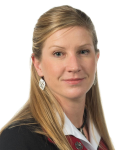
In 2004, with a master’s degree in meteorology in hand from the University of Oklahoma, Nicki Hickmon set out on a career that has included software development, project management, ARM Mobile Facility instrument maintenance, a stint as facility manager of ARM’s Southern Great Plains (SGP) atmospheric observatory, and extensive fieldwork. She has been part of ARM campaigns in mountainous Colorado, the Maldives, aboard a ship transecting the Pacific, and at a snow-cloaked field site in remote, boreal Finland. In addition to her ARM role, Hickmon is a member of the core team for DOE’s Artificial Intelligence for Earth System Predictability initiative. Its mission is to develop AI strategies to improve earth system predictability.
Read more about Hickmon here.
ARM User Executive Committee (UEC)
Jennifer Delamere
UEC Chair/Representative for Radiative Transfer
University of Alaska, Fairbanks
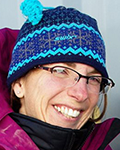
Jennifer Delamere studies the Arctic environment from ground and space. As research faculty at the University of Alaska Fairbanks, Delamere is part of a multiyear project recording how springtime snowmelt influences the reflectivity of snow and other surface features. Delamere is also the director of the Geographic Information Network of Alaska, where she manages a downlink facility for polar-orbiting satellites. In 2023, Delamere became the UEC chair.
Read more about Delamere here.
Sarah Brooks
UEC Representative for Aerial Measurements
Texas A&M University
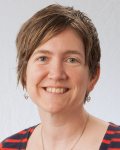
As a supplier and user of ARM data, Sarah Brooks sought a position on the UEC because she wanted to ensure a quality connection between the people working hard to generate the data and those using them. Brooks, a research scientist, professor, and director of the Center for Atmospheric Chemistry and the Environment at Texas A&M University, collected data with her continuous flow diffusion chamber as part of 2008’s Indirect and Semi-Direct Aerosol Campaign (ISDAC) at ARM’s North Slope of Alaska atmospheric observatory. The instrument counts ice-nucleating particles (INPs) and includes a depolarization detector that differentiates between droplets and ice. More recently, Brooks led an INP campaign related to ARM’s 2021–2022 TRacking Aerosol Convection interactions ExpeRiment (TRACER) in the Houston, Texas, area. The TRACER-INP campaign focused on quantifying aerosol concentrations around Houston and their ability to act as INPs.
Read more about Brooks here.
Susannah Burrows
UEC Representative for Aerosol Modeling
Pacific Northwest National Laboratory
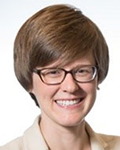
In second grade, a teacher asked Susannah Burrows to keep a daily journal of the weather. From there, curiosity took over. Today, Burrows leads a team of scientists studying the tiny atmospheric particles that initiate ice formation in clouds. The team is using particle samples from the SGP and Southern Ocean. Within the UEC, Burrows chairs a subgroup to enhance communication with scientists working with models such as DOE’s Energy Exascale Earth System Model (E3SM).
Read more about Burrows here.
Jessie Creamean
UEC Representative for Aerosol Measurements
Colorado State University
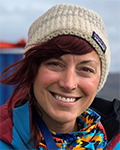
Jessie Creamean, an Illinois native with a taste for research in the world’s coldest places, is a specialist in aerosols. She is an ARM aerosol mentor and a widely published university author who hopes to attract more users to ARM data. Creamean mainly investigates INPs, the bits of matter—dust, pollen, sea spray, and more—that seed ice in clouds. They affect the reflectivity of clouds and help make precipitation possible. In September 2019, Creamean was among the first scientists to head for the central Arctic on a research icebreaker as part of the Multidisciplinary Drifting Observatory for the Study of Arctic Climate (MOSAiC) expedition. In addition to her role as the UEC representative for aerosol measurements, Creamean is co-chair of the ASR high-latitude processes working group and is the lead instrument mentor for ARM’s ice nucleation spectrometer.
Read more about Creamean here.
Erika Roesler
UEC Representative for Cloud Modeling, High-Resolution Modeling
Sandia National Laboratories
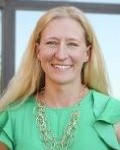
Erika Roesler, an atmospheric scientist at Sandia National Laboratories, explores the relationship between ARM and the climate modeling community in her role as part of a UEC subgroup that hopes to enhance communication efforts between ARM and modelers. Roesler is looking at how researchers could better apply DOE’s E3SM and other global modeling data to understand potentially extreme future climate conditions. A recent project of Roesler’s, a special configuration of E3SM, uses a grid-like regionally refined “mesh model” over the Arctic. It’s part of DOE’s High-Latitude Application and Testing of Earth System Models Science Focus Area.
Read more about Roesler here.
Maria Zawadowicz
UEC Representative for Aerosol Measurements, Land-Atmosphere Interactions
Brookhaven National Laboratory

Tiny particles make a big impact for Maria Zawadowicz. The Brookhaven National Laboratory assistant environmental scientist designs aerosol field instruments and serves as the lead instrument mentor for ARM’s aerosol chemical speciation monitor. Currently, Zawadowicz is a co-investigator in a project sponsored by ASR: the Process-level AdvancementS of Climate through Cloud and Aerosol Lifecycle Studies (PASCCALS) Science Focus Area. PASCCALS is investigating the multifaceted magnitude of how aerosols and clouds influence the Earth’s energy budget. Zawadowicz’s PASCCALS research centers primarily on analyzing aerosol data that was collected during ARM’s TRACER field campaign. In 2023, Zawadowicz was named vice chair of the instrumentation working group within the American Association for Aerosol Research (AAAR). She also chairs the UEC’s Measurement Uncertainty and Communicating Calibrations subgroup.
Read more about Zawadowicz here.
Yunyan Zhang
UEC Representative for Land-Atmosphere Interactions
Lawrence Livermore National Laboratory

Yunyan Zhang models the life cycles of clouds and the complex interactions of land and atmosphere. Her work attempts to overcome the uncertainties in numerical simulations of the Earth’s atmospheric boundary layer. That’s the lowest band of the atmosphere, where weather happens. It is also where clouds are influenced by surface conditions, including heat fluxes, wind, and complex vegetation. Zhang also studies the atmospheric diurnal cycle, which causes variations in daytime and nighttime temperatures near the Earth’s surface. Modeling the links between land and atmosphere is critical for predicting regional weather as well as the climatic state of earth systems.
Read more about Zhang here.
Science Constituent Group Chairs
Christine Chiu
Cloud and Precipitation Measurements and Science Group Chair
Colorado State University
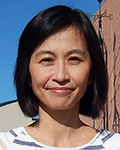
Christine Chiu, a professor at Colorado State University, is always fascinated by how clouds evolve and influence Earth’s energy flow. Chiu combines remote sensing observations from ARM scanning cloud radars and other instruments to boost our understanding of cloud physical processes, aiming to improve how current models represent clouds. Her research interest in radiative transfer and the interlocking relationships of clouds, aerosol, and precipitation also led her to explore artificial intelligence, which is “a perfect marriage,” she says, with voluminous ARM data. Her work as an ARM constituent group chair brings together scientists representing the ARM research community and experts in engineering, instrument operations, and data translation to address critical gaps of science and data in cloud and precipitation research.
Read more about Chiu here.
Gannet Hallar
Aerosol Measurement Science Group Co-Chair
University of Utah/Storm Peak Laboratory
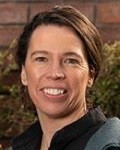
Gannet Hallar is a professor of atmospheric science at the University of Utah and is the director at Storm Peak Laboratory, a high-altitude research center in Colorado run by the University of Utah. From the fall of 2010 to the spring of 2011, Hallar participated in ARM’s Storm Peak Lab Cloud Property Validation Experiment (STORMVEX), a field campaign designed to collect data on wintertime cloud and aerosol properties, from within the clouds themselves. In May 2024, she will be the first principal investigator of a field campaign using ARM’s ArcticShark uncrewed aerial system.
Read more about Hallar here.
In the Field
Rebecca Adams-Selin
Verisk Atmospheric and Environmental Research
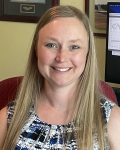
Rebecca Adams-Selin is an atmospheric scientist and a senior manager of science in the Modeling Atmospheric Components and Processes Section at Verisk Atmospheric and Environmental Research. In 2022, Adams-Selin and three fellow researchers launched an ambitious effort to investigate and model some little-understood features of mesoscale (regional-scale) convective systems. Their three-year project, “Establishing a Holistic Understanding of the Circulations of Mesoscale Convective System Stratiform Regions,” is funded by ASR and will use data collected during ARM’s 2011 Midlatitude Continental Convective Clouds Experiment (MC3E) and the 2015 multi-agency Plains Elevated Convection at Night (PECAN) Experiment. Both campaigns took place at the SGP.
Read more about Adams-Selin here.
Allison C. Aiken
Former UEC Chair
Los Alamos National Laboratory

Allison C. Aiken is a highly cited author of more than 50 papers, most of them on the properties, evolution, and transport of aerosols. These ultrafine liquid and solid particles influence cloud formation, precipitation, and the amount of solar radiation reaching the Earth’s surface. Among the aerosols Aiken studies are those from wildfires, which can scatter for thousands of miles or linger to influence regional weather and air-quality conditions as well as supermicron and bioaerosols. Most recently, Aiken served as a co-investigator for the Surface Atmosphere Integrated Field Laboratory (SAIL) field campaign in Colorado and the Eastern Pacific Cloud Aerosol Precipitation Experiment (EPCAPE) in Southern California.
Read more about Aiken here.
Ogochukwu Enekwizu
Brookhaven National Laboratory

Ogochukwu Enekwizu is an assistant environmental scientist in the Environmental and Climate Sciences Department at DOE’s Brookhaven National Laboratory. Her research is focused mainly on soot—specifically the black carbon particles emitted by wildfires. Data from the laboratory experiments and real-world studies, including data collected during ARM’s Biomass Burning Observation Project (BBOP) and Layered Atlantic Smoke Interactions with Clouds (LASIC) field campaigns, have been used by Enekwizu and her Brookhaven colleagues in their study of how smoke aerosols influence cloud formation and lifetime. Enekwizu, along with fellow Brookhaven researcher Maria Zawadowicz, is a co-investigator on the ASR-supported PASCCALS Science Focus Area and is an associate instrument mentor for ARM’s cloud condensation nuclei particle counter, single particle soot photometer, and aethalometer. She is the current vice chair of the AAAR combustion and materials synthesis working group.
Read more about Enekwizu here.
Lynn Russell
Scripps Institution of Oceanography at the University of California San Diego
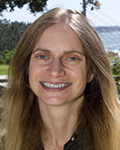
A professor at Scripps, Lynn Russell led the EPCAPE campaign in La Jolla, California, from February 2023 to February 2024. EPCAPE deployed instruments at the urbanized coastal edge of the eastern Pacific to record how aerosols from polluted and pristine sources affect low marine stratocumulus clouds. The data collected capture cloud spatial extent, radiative properties, precipitation, and aerosol interactions and concentrations. From 2015 to 2017, Russell co-led the ARM West Antarctic Radiation Experiment (AWARE), considered the most comprehensive meteorological field campaign in West Antarctica since 1957.
Read more about Russell here.
Allison Steiner
University of Michigan

Allison Steiner, a professor and research team lead at the University of Michigan, studies biological aerosols that start as pollen. A recent ASR-funded project led by Steiner focused on SGP field observations that provided evidence of pollen in the planetary boundary layer and pollen components in cloud droplets and fine particulate matter. More recently, Steiner has shifted her focus to an ARM atmospheric observatory in northwestern Alabama. As a member of the site science team for the deployment of the third ARM Mobile Facility (AMF3), Steiner has helped guide the move of AMF3 from Oliktok Point, Alaska, to Alabama’s Bankhead National Forest to help maximize the scientific value and impact of the new location.
Read more about Steiner here.
# # #ARM is a DOE Office of Science user facility operated by nine DOE national laboratories.

